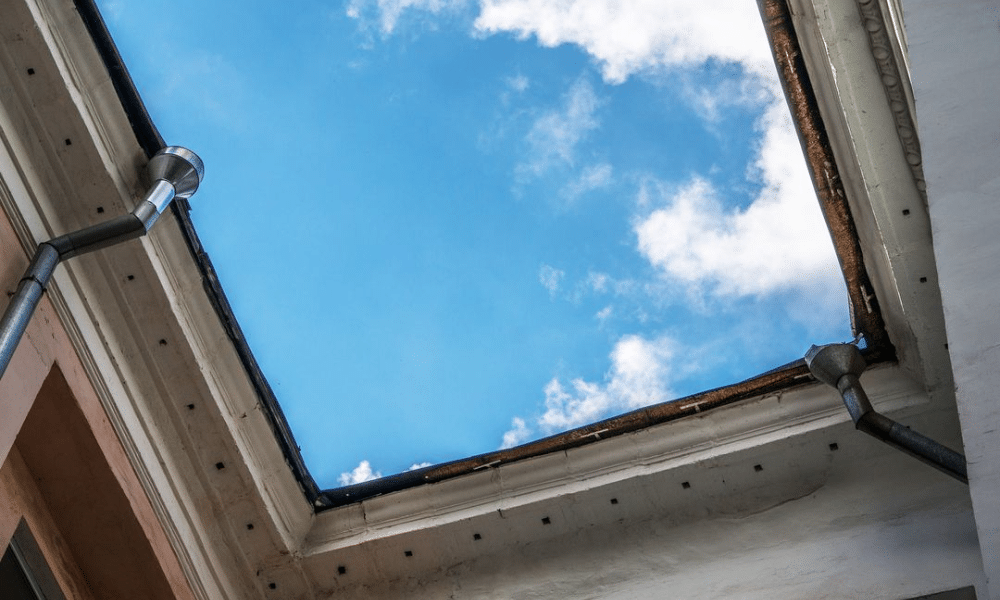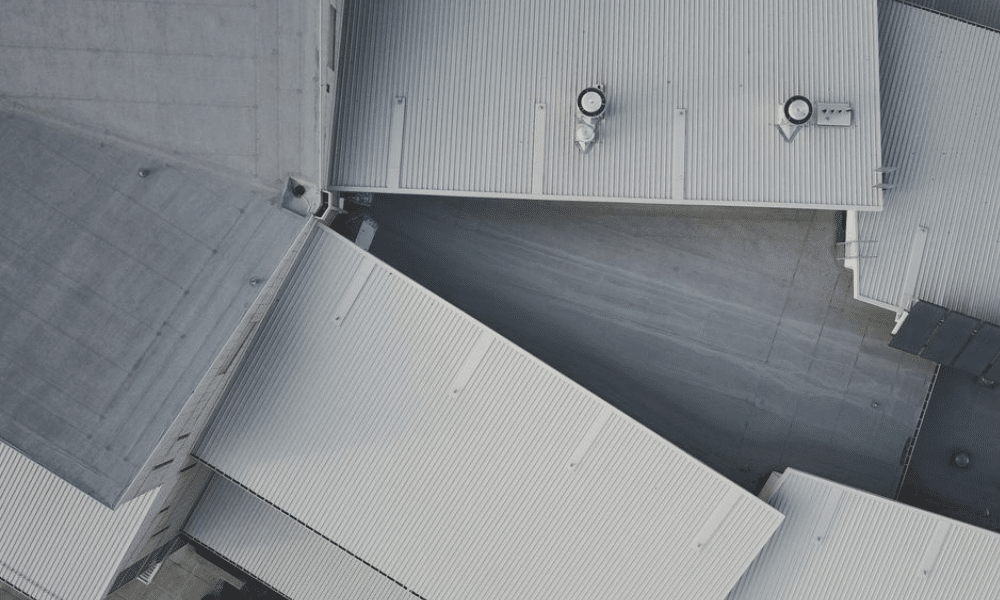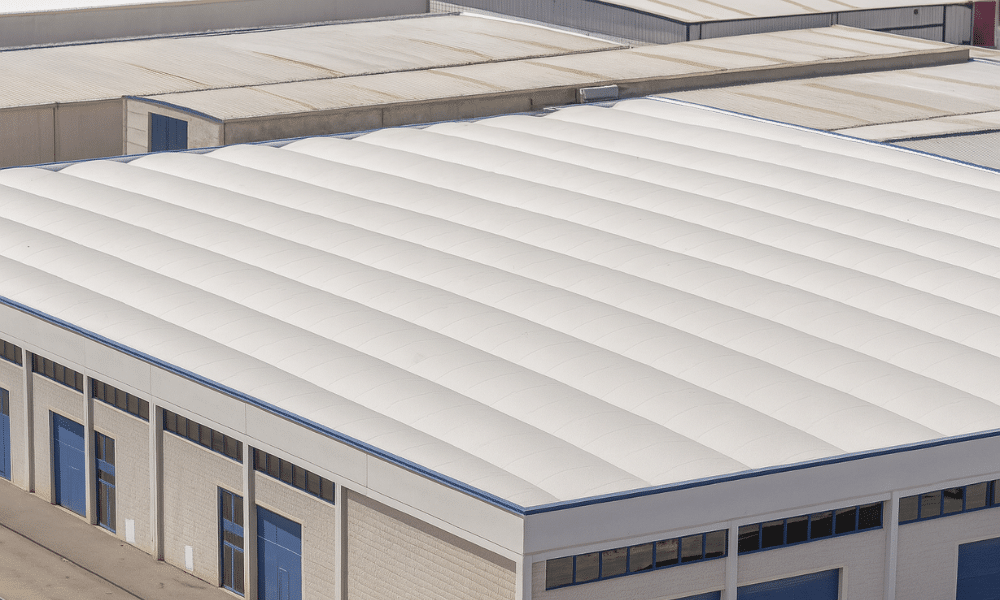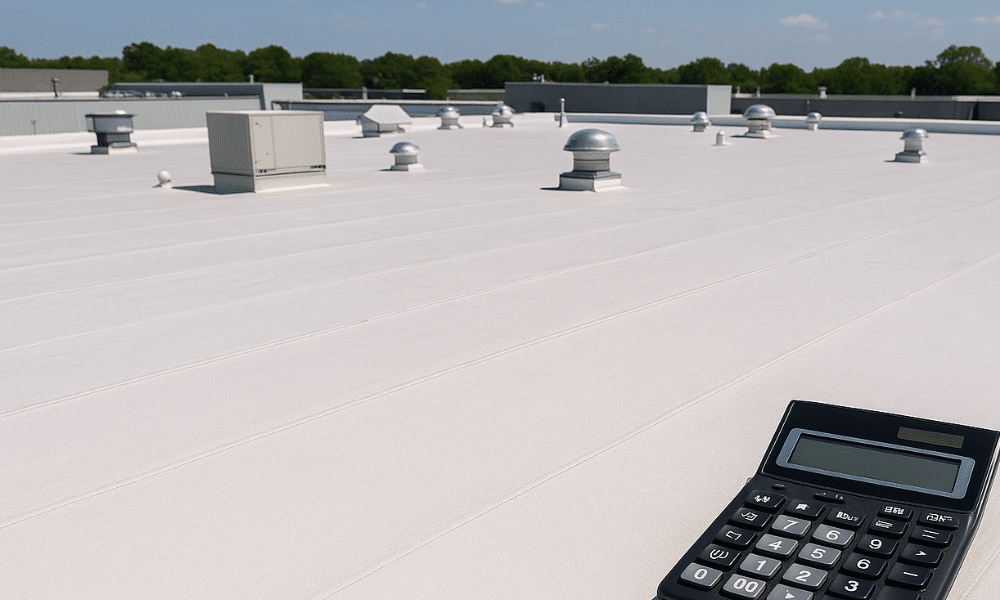
Summary Highlights:
- Poor drainage is a top cause of flat roof failure and water damage.
- Ponding water accelerates membrane breakdown and mold growth.
- Custom drainage solutions like internal drains and scuppers can extend roof life.
- Early inspections help avoid structural damage and insurance headaches.
As a commercial roofing contractor serving businesses across Texas, we've seen firsthand how water pooling on a flat or low-slope roof can cause thousands in damage. At WaterTight Roofing, we specialize in commercial roof drainage systems that protect your investment, reduce future repair costs, and ensure long-term building integrity. Find out why drainage matters, how it works, and when to act.
What Happens When Commercial Roofs Don't Drain Properly?
Improper drainage is one of the most common causes of roof failure in commercial properties. If water can't flow off your roof efficiently, it begins to pool in low spots. This standing water—or "ponding"—adds significant weight and accelerates wear and tear on roofing membranes like TPO, EPDM, or modified bitumen.
Ponding also encourages algae growth and invites water intrusion through seams, fasteners, and roof penetrations. Over time, it can lead to structural sagging, ceiling leaks, insulation saturation, and even deck rot. Not to mention, wet insulation drastically reduces your building's energy efficiency.
Flat roofs are especially prone to drainage problems. These systems rely on custom-engineered slopes, crickets, and drains to direct water where it needs to go. Even a minor slope miscalculation or clogged drain can have major consequences after just one storm.
What Are the Most Effective Roof Drainage Solutions?
Effective roof drainage isn't one-size-fits-all. It's a custom solution that must account for building design, regional weather patterns, and roofing material. At WaterTight Roofing, we begin every evaluation with a full commercial roof inspection for damages and improper drainage. This allows us to identify areas where water may be pooling, overflows may be occurring, or where drainage systems aren't functioning as designed. Once we understand the structure's needs, we tailor the best drainage solution to extend the lifespan of the roof and prevent avoidable water-related issues.
Here are some of the most effective drainage options we implement for commercial flat and low-slope roofing systems:
Internal Drains: These are built into the roof's field and connect to internal piping that channels water through the building and out at ground level. Internal drains are ideal for large flat roofs exposed to heavy rainfall, such as distribution centers or hospitals. They're especially beneficial for structures where external piping might freeze or be vulnerable to vandalism or damage.
Scuppers: Scuppers are strategically placed openings at the edge of a roof that allow rainwater to exit the roof surface and flow into downspouts. This is a cost-effective and low-maintenance solution for smaller commercial buildings or low-rise offices. Scuppers are often paired with conductor heads and downspouts to manage larger volumes of water efficiently.
Tapered Insulation Systems: Flat roofs often struggle with water ponding due to lack of slope. Tapered insulation solves this by creating subtle pitches across the roof deck, directing water toward drains or scuppers. This system also improves energy efficiency by enhancing the roof's thermal resistance—an added bonus for managing heating and cooling costs.
Overflow Protection: Every good drainage system needs a Plan B. Overflow scuppers or emergency drains act as backups if the primary drainage components become clogged with debris. These safeguards are not only best practice; they're often required by local building codes to prevent water intrusion and structural load stress during storms.
If you're unsure which system you have—or if it's working—we can help with an assessment.
How Can You Tell If Your Roof Drainage Is Failing?
Several red flags signal that your roof's drainage system might be underperforming. You might see:
- persistent water ponds 48+ hours after rainfall
- roof membrane wrinkles or bubbles near low spots
- vegetation growing from drains or gutters
- sagging in roof insulation or deck
- stains or mold on interior ceilings
At WaterTight Roofing, we use advanced diagnostics—including thermal imaging, drone-assisted surveys, and core sampling—to detect signs of poor drainage and hidden moisture infiltration. These tools help us assess slope performance and determine whether repairs, re-sloping, or drain modifications are needed. Early identification of these issues can save you from more expensive structural or interior damage down the line.
What Should You Do After a Major Storm?
In Texas, sudden storms with heavy rainfall, hail, or wind are common. Even if your roof looks okay from the ground, drainage systems may be clogged, cracked, or overwhelmed. The importance of post-storm roof inspection can't be overstated.
A simple blocked internal drain could trap thousands of gallons of water on your roof—adding up to 5 pounds per square foot. That puts immense strain on structural supports and often leads to emergency repairs.
After every major storm, schedule a follow-up inspection. Our WaterTight Roofing team will check drain baskets, scuppers, gutters, and downspouts for debris. We'll also look for flashing separation, split seams, and pooling—all signs that water didn't leave the roof properly.
When Should You Invest in Drainage Upgrades?
Drainage systems aren't just for new roofs. If you've dealt with chronic leaks, repairs, or even just increasing HVAC costs, it may be time to revisit your roof's slope or drain layout. Common signs it's time to upgrade:
- water consistently pools in the same areas
- drain placement doesn't align with slope direction
- roof drains clog easily or don't match building code
- your roofing system is aging or due for replacement
Our team at WaterTight Roofing can retrofit modern drainage technology into older commercial roofs, often without needing a full tear-off. We'll redesign slopes using tapered polyiso, add scuppers or auxiliary drains, and ensure that runoff flows smoothly off your roof and away from your structure.
How Can You Prevent Drainage Issues Long-Term?
Preventive maintenance is your best friend when it comes to roof drainage. Here's what we recommend:
- Schedule biannual roof inspections—in spring and fall.
- Clean out drains, scuppers, and gutters after every major storm.
- Keep trees trimmed away from the roof perimeter.
- Watch for pooling water after heavy rain.
By staying ahead of clogs and slope failures, you'll prevent water intrusion, mold, and structural damage. Our preventative maintenance programs at WaterTight Roofing are designed to keep drainage systems flowing and roofs performing all year round.
Need Help with Drainage? Let's Inspect Your Roof
Whether you're managing a retail center, office park, industrial warehouse, or educational facility, proper drainage isn't optional—it's essential. If you're seeing signs of pooling water, clogged scuppers, or frequent leaks, don't wait for damage to get worse. At WaterTight Roofing, we're ready to assess your roof and customize drainage solutions that keep your building protected and dry.
Reach out today to schedule your inspection and stay one step ahead of costly repairs. Call us at 888-809-9976.
FAQs About Commercial Roofing Inspection
Blog subscribers get new resources and how-to guides delivered via email.
Your Business Relies On Staying Dry





